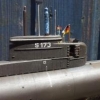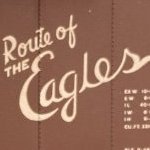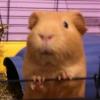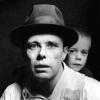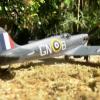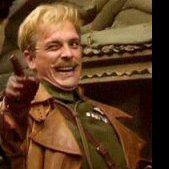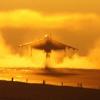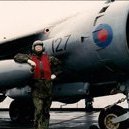Search the Community
Showing results for tags 'nieuport'.
-
Kovozávody Prostějov (KP) is to release 1/72nd Nieuport Triplane kits Source: http://www.modelarovo.cz/nieuport-triplane-1-72-kp-kovozavody-prostejov/ Box art and sprue V.P.
- 25 replies
-
- 2
-

-
Eduard has just re-released its 1/72nd Nieuport 17 kit as Weekend Edition - ref. 7404 Source: https://www.eduard.com/eduard/nieuport-ni-17-1-72-1.html V.P.
-
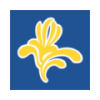
1/32 - Nieuport 21 & 23 by Copper State Models - released
Homebee posted a topic in The Rumourmonger
After the Ni-17 (link) Copper State Models is to release 1/32nd Nieuport 21 (XXI) and 23 (XXIII) kits. Source: https://www.facebook.com/copperstatemodels/posts/2449134318708646 V.P. -
Eduard is to re-release its 1/48th Nieuport Ni-17 in the Profipack range - ref. 8071. Source: https://www.facebook.com/EduardCompany/posts/3031381500210110 V.P.
-
Copper State Models is to release a 1/32nd Nieuport Ni.17 kit - ref. Source: https://www.facebook.com/copperstatemodels/posts/2076250305997051 V.P.
- 31 replies
-
- 4
-

-
- Nieuport
- Copper State Models
-
(and 1 more)
Tagged with:
-
I wasn't quite ready to do more to the Taube (I've done well and want to build my skill before rigging) so I decided to start something else. With the wife away for the weekend I wanted to do as much as I could. Due to this I haven't taken as many progress shots to show you, but most of you know what I'm about now.
-
I have several early Great War aircraft in the pile and have the bug to get a few completed. I've posted shots of my completed Tabloid and here's a start on the SH 1/48 Nieuport 10 that's just been released as a two seater. While the instructions show the top wing with the hole SH elected to remove this part from the kit. Looking at the Datafile and period photos I added it back in the wing provided in the kit. The attachment points for the bottom wings is almost non-existant so I added some wire to beef it up but am still going to the hardware store to get some epoxy glue to strengthen the joint. The observer sits in the front and the pilot on the rear seat. I have a GasPatch 1914 Hotchkiss to mount on the top wing. Apparently this configuration didn't last very long as the observer standing up through the wing interfered with the air flow to the rudder and the pilot's ability to see ahead. I've got some blue decal sheet ordered to do the taping around the wings and fuselage; initially I thought of masking with Tamiya tape and painting the tapes but was concerned the yellow might pull up in places.
- 24 replies
-
- 8
-

-
- WW1
- Special Hobby
-
(and 1 more)
Tagged with:
-
EX518. 1:48 Nieuport 11 Express Mask. Released to accompany the Nieuport 11 kit is a set of masks in Kabuki tape. A distinguishing feature of many Ni-11's was the painted edging applied to wings and tails. This set makes simple work of masking it up, with full size shapes to apply to the wings and tails. Both upper and lower masks are supplied, as the edging went around all edges. A pair are also supplied for the rudder, and finally the wheel centres, and the windscreen. I have always found that spraying gives the best results, with kabuki tape giving the sharpest and best result possible. This set will make light work of what would otherwise be a difficult and time consuming masking job. Also reviewed, The Nieuport 11 Weekend edition kit Highly Recommended. Review sample courtesy of
-
Nieuport 11 Eduard 1:48 Weekend edition The Nieuport 11 first appeared over the western front in early 1916, and made a massive contribution to ending the 'Fokker scourge'. It outclassed the Fokker Eindekkers in almost every respect, except perhaps that it did not posses a synchronised gun firing through the propeller. Its single Lewis gun was mounted on the top wing, and fired over the propellers arc of rotation. Its main innovation was the use of a sesqiplane layout, with a larger top wing and small narrow chord lower wing, connected by 'V' interplane struts. This gave both excellent manoeuvrability and field of view. The arrangement could be fragile in a dive however, and care was needed to avoid flutter and tearing the wings off. Known as the Bébé due to its diminutive size, the aircraft served in the front line for over a year, and was used by the air forces of France, Britain, Italy, Russia, and Belgium, with a total of over 7,000 produced. The Kit First released in the early 2000's, this latest release is a very welcome reissue. Offered as a 'Weekend edition' the box art features Armand de Turenne's tricolour painted Ni-11, with a small profile Raoul Lufbery's machine below. Inside are two sprues of beautifully moulded parts that are still as good and crisp as they were when first released several years ago. Everything is flash-free, and what few ejector pin marks there are, are well hidden where they will not be seen. The fuselage mouldings are especially good, with beautifully fine stitching and rivet detail. We are also supplied with a very nicely moulded little pilot figure, unusually in a standing pose to display by the finished model. This is a very nice touch, and most welcome. The smaller parts are all supplied on the second sprue, and again all is very finely moulded to an excellent standard. Several parts are not required, such as the Le Prieur rockets and their associated 'V' struts, and the headerest for the almost identical Nieuport 16, which is also kitted by Eduard. The model itself goes together very easily and accurately. I know because I have built several over the years, in both Ni-11 and NI-16 issues. There are no pitfalls to watch out for, it is pretty much a trouble free build. A couple of simple suggestions though; - Glue the cabane struts B30 and B31 to the unpainted fuselage before painting. This will give a nice strong join, and does not interfere very much with painting anyway. - Unusually, Roundels are carried on the under surfaces of both wings. Paint the underside of the top wing and apply the roundel decals to it before assembly. The Roundels cover the mounting holes for the tops of the 'V' struts, and you can't put them on after it is all assembled. There is a reason that I know this! A small clear moulded windshield is provided. This is actually mostly frame to be painted, with a central section left clear. Rigging is fairly minimal, and can be done fairly easily with stretched sprue. Alternatively, Invisible mending thread also works, and is my preferred method. Marking Options. Two options are supplied, the very attractive Tricolour machine of Armand de Turenne as featured prominently on the box art, and the more drab version flown by Raoul Lufberry. The box art and instructions depict very different shades of blue on the forward fuselage of Turenne's machine, dark on the box and overly bright in the instructions. The most likely shade is probably that of the roundels, so personally I would match my paint to the roundel blue on the decals. Conclusion. This is a lovely kit of an equally lovely little aeroplane. The mouldings are first class, and from experience I know that it is a trouble free build. With care it can be assembled without any need for filler, it is that good. It is also an ideal 'first biplane' as the inverted 'V' cabane strut and normal 'V' interplane struts make alignment virtually foolproof. Rigging consists of 3 lines per wing, an 'X' on the undercarriage, 2 tiny lines to the rudder, and 2 runs per fuselage side to the elevators. All very easily done with stretched sprue and white glue. The finished model beautifully captures the light and delicate look of the real Bébé , and is no bigger than a 1:72 Spitfire so you can build an display lots of them. It is hard to choose a favourite among Eduards exquisite range of WW1 aircraft, but this is definitely in my top 5. I am very pleased to see it available once again. This is one I made a few years ago, albeit not the same version as this release. It has the Le Prier rockets which were intended for Balloon busting, but were found to be inaccurate. Note the outlining on the flying surfaces, (see masking review) Highly Recommended. Also available is a Mask set Review sample courtesy of
-
After the Gotha GL.VII ( http://www.britmodeller.com/forums/index.php?/topic/234976060-172-gotha-glvii-by-bat-project-released-new-variantboxing ) Bat Project is to release soon a 1/72nd Nieuport Ni.21kit family. - ref.72001 - Nieuport Ni.21 fighter Source: http://hobbyterra.com/product/nieuport-ni-21-fighter-in-1-72-scale-bat-project-72001.html - ref.72002 - Nieuport Ni.21 biplane Source: http://hobbyterra.com/product/1-72-scale-nieuport-ni-21-biplane-bat-project-72002.html - ref.72005 - Nieuport Ni.21 biplane Source: http://hobbyterra.com/product/aircraft-in-1-72-scale-nieuport-ni-21-biplane-bat-project-72005.html V.P.
-
Nieuport NiD 29 / Nakajima KO-4 1:72 Azur FRROM The Nieuport NiD-29 C1 is a fighter designed br by Gustave Delage in 1918. WWI ended before it was produced. In 1920 it was selected as new fighter by the French Aéronautique Militaire and the delivery to the units started in 1922. 700 of this aircraft were produced. In 1925 the French Aéronautique Militaire had 25 NiD-29-equipped squadrons. Several aircraft fitted with bomb-racks took part in low-level assault tasks in North Morocco at the end of 1925. The Nieuports remained in service with France till the end of the 20s. Aircraft were also produced under license in Belgium, Japan, Italy and Siam. They were used by the air forces of other countries as Spain, Sweden, Argentina, Kwansi, China and Manchuria. In 1922 the Belgian Aéronautique Militaire ordered 108 aircraft. Twenty aircraft were delivered direct by Nieuport from 1922 (Ni.1 to Ni.20) and eighty eight were built under license by SABCA (Ni.21 to Ni.108) these were delivered between January 1924 and October 1926. During 1931 they were replaced by Fairey Firefly IIM fighters. Sweden ordered ten Nieuport NiD-29 C1 in 1925. In the new Flygvapnet (created on first July 1926) they were named J2 (Jaktflygplan 2, for fighter aircraft 2) and wore the numbers 63, 65, 67, 69, 611, 613, 615, 617, 619 and 621. In 1929 seven machines were still in service. In 1922 the Italian Army selected the Nieuport NiD-29 C1 for the new Regia Aeronautica. Macchi and Caproni built these under license. It was named Macchi M.29 by Italians. The first Italian built machines were delivered to fighter units in October 1924, all together 175 aircraft were built by both Italian firms. They remained in service till 1931. In 1923 the Spanish Aviacion Militar ordered 30 aircraft. Deliveries started from the end of 1923. They equipped the fighter group of Getafe (Madrid). In September 1924 some were sent to North Morocco, they were based at Nador (Melilla). They took part in the Morocco war. Spanish aircraft were withdrawn in 1931 and replaced by Nieuports 52. The Nieuport NiD-29 C1 was selected by the Japanese Army to replace the Spad XIII and Ni.24. In 1923, one machine was bought in France. The NiD-29 was built under license by Nakajima which produced 608 machines. The type was called Ko-4 by Japanese. The Hiko Rentai (Air regiments) 1, 3, 4, 7 and 8 were equipped with Ko-4. Fighter units with Ko-4 took part in the invasion of Manchuria in 1931 and 1932. A lot of fighter schools were equipped with Ko-4 in 1937 (according to some sources, they were still in service in 1941). In China, the Kwansi government bought ten Nakajima Ko-4s in 1935 for advanced training. The following year the Kwansi joined the central Nanking government. All the aircraft were then integrated into the Chinese Air Force. At the end of 1937 seven Ko-4s were still in service for training. Manchuria bought four Ko-4s. After the Japanese invasion, these aircraft were put into service by the Japanese Army. In 1937 one Ko-4 was used by the new Manchukuo military aviation. In 1923 the Siam Aeronautical Service chose the Nieuport NiD-29 for its fighter units. Twelve machines were ordered from France as well as forty Hispano 8Fb engines. Licensed construction was also negotiated. The NiD-29 C1 was named Bin Khpa Laï 4 (it means fighter model 4). Forty aircraft were built by local factory. The 52 aircraft equipped four fighter squadrons. In 1937 they were replaced by Curtiss Hawks II & III (some sources claim several machines remained in service for training until 1941).(Information from Azur FFROM) The Kit On opening what seems to be Azur FFROMs standard open end box you are presented with a model which can only be described as one of few parts. There is one sprue of shorter run injection plastic, two small bags of resin parts, one sheet of clear acetate for the canopy, and a small PE fret. The parts feature some nice if restrained detail, appear to be well moulded with no problems. The fabric effect on the wings is very good for this scale, some of the smaller parts have a little bit of flash, but its nothing serious. Construction like most aircraft starts with the cockpit. This is made up from a combination of plastic and PE parts for the finer items. Once this is made and installed the fuselage and be closed up. Once this is done the lower wing and the tail planes are attached. Next step is to attach the wheels and their bracing struts. All of these are plastic. Also at this stage what appear to be oil coolers? In resin are attached to the wheel bracing struts. The guns can then be added to the top of the area behind the engine cowling. The kit includes open guns, and ones covered by a shroud without any real explanation in the instructions of which ones to use. I guess the modeller will have to consult references. The engine cylinder heads and exhaust are attached next. These are supplied in resin, and are very small / delicate. Once finished with the engine its on to the upper wing. There are a total of 10 individual struts to line up here so this will not be a quick job. Once finished there is the small matter of the windscreen, and small it is! This is printed on a flat sheet of thin acetate and will have to be cut out the folded by the modeller. Given the bad vac canopies I have seen on other 1:72 bi planes this might be a better idea? Finally with this kit Azur FFROM have actually provided a rigging diagram! Decals - France & Belgium Boxing The France & Belgium Boxing of the kit gives three choices of markings. ND-29 C1 of SPA 124 "Fayette" Soiux Indian Head Emblem (France) - Overall Dark Green ND-29 C1 of SPA 81, German occupation Force 1924 (France) - Overall Dark Green ND-29 C1 of no85 of 9th Escadrille de Chasse Of belgium 1922 - Dark Green over Aluminium Dope Decals - Export Boxing The Export Boxing of the kit gives three choices of markings. ND-29 C1 of the Flygvapnet J2 (Sweeden) - 1926 - overall Aluminium Dope ND-29 C1 of M29 of the Regina Aeronatica, 70th Sqn (Italy) - 1927 overall Aluminium Dope ND-29 C1 of the First Fighter Group Spanish Military Aviation, Getafe in 1926 - Overall Dark Green Decals - Nakajima Ko-4 Boxing The Nakajima Ko-4 Boxing of the kit gives four choices of markings. Nakajima Ko-4 No.83 Imperial Japanese Army - overall Grey / Green Nakajima Ko-4 No.695 Imperial Japanese Army - overall Grey / Green Nakajima Ko-4 No.220 Imperial Japanese Army - overall Grey / Green (Red Rudder) ND-29 C1 of Bin KhpaLai 4 of the Royal Aeronautical Serive of Siam in 1936 - Overall Dark Green All decals are by Aviprint and look to have good colour density and be in register. Conclusion This kit from Azur FFROM does fill a gap in the "tween wars" fighter era. I cant find any evidence of anyone else doing this kit outside of short run resin. The kit is not an easy one by any means, but should build up to a nice model with some time and care. Overall recomended to those with some bi-plane building under their belts. Review sample courtesy of
-
A bit of history to start. In WWI the Dutch airforce (Luchtvaartafdeling, LVA) had a large number of different airplanes, most of which landed in the Netherlands (neutral territory) after engine trouble or by mistake. The Nieuport was one of those. After tests in 1916 the LVA ordered 10 Nieuports. These were delivered in 1918 and remained in service until 1925. The planes were silver doped, and had the then standard dutch orange roundels. These were nicknamed "gehaktballen" (meatballs). A few of the planes had a black cockerel* on the sides. Dutch Decal provide a nice sheet for these machines. I'll be building one of those. Well... that's the planning. I have the decalset... I'll will let you know when I get the kit... *I'm rather happy I found a "cockerel" named in another post. Normally I would use a shorter word, but then the title would be very... uhm... let's say fitting for a complete different kimd of forum? And telling an Irish friend what I was doing wasn't helpful either. She understood me as saying I will be "mating a french model". Well, entendre (as in double entendre) is a French word, isn't it? So, that's French fancy for you!
-
Well then, let's see how this goes! My first Eduard 1/48 WW1 model, following on from many 1/72s over the years and a handful of 1/28 Revells. Kit box and sprue shots: There are two versions in the box - N1531, Guynemer's fourth fighter, painted in plain aluminium dope with "Vieux Charles" written on black pennants hanging off the interplant struts. The second version, N1530, was the fifth aircraft and lacks Guynemer's iconic name for his aircraft anywhere in the livery, but has a green/brown camouflage on the upper surfaces of the wings. At this stage I am leaning towards N1531 because I feel that Guynemer's aircraft should have "Vieux Charles" on them somewhere. However my concerns at this stage are: 1) how to paint the tricolore on the aerodynamic nose cone. Looks like a trip to masking hell! 2) how to make the pennant look like a pennant However, while I try to figure these things out, I will get on with the basics. Rigging will be drill 'n' fill. I looked at using buckles but this is such a tiny model that it would be gilding the lily.
- 10 replies
-
- Vieux Charles
- Guynemer
-
(and 2 more)
Tagged with:
-
Hi folks,built for the under a tenner GB,Revells ancient but very good Nieuport N28.I rigged it with stretched sprue(a first) for £3:25 how much fun can you have with your clothes on? I could get hooked on these little Biplanes.Thanks for looking.
-
This is my third attempt at a WW1 aircraft in 1/48th scale. This time I chose the Eduard Nieuport Ni-23 (kit number 8075) which looks like it has now been discontinued (as at time of writing). I'm not a great fan of Eduard's "basic level" instruction sheets for these kits - I was looking for an out-of-the-box build and found myself trawling the web on a number of occasions to find out the positioning of a number of parts, particularly in the cockpit. Perhaps I just need to build more WW1 kits to become more familiar with these areas? Anyhow, it was reasonably straight-forward to build once I worked out what I had to do and where things went. The main colour was actually sprayed this time from a Humbrol rattle can - Aluminium. As an introduction to "air-brushing" it was quite easy, but it's as far as I'll be going in that direction. Everything else was the traditional brush work. The wood effect was a variety of browns smeared and wiped around whilst wet. The decals though were far from simple to apply - every single decal I applied bar one split into two or more parts once wetted. I've no idea why, but it was a real pain. Too thin for their own good, maybe? Rigging was of the "knitting-in elastic" variety. Weathering was a mixture of acrylic artist powders and Tamiya weathering plus some zip brushable pen work (e.g. the wing rib shading). She was given an overall matt varnish spray to finish. The scheme, according to the kit is for "A DUX built Nieuport 23, flown by Kpt. Brodovicz, 10th Squadron, Imperial Russian Air Force, Spring 1917". There's a slightly different alternative in Eduard's 1/72nd combo kit (7073) that has this aircraft being flown by Lt. Boris "Bob" Guber - the roundels are different and it has a serial number applied. Either way, I prefer to simply refer to is as "BOD", not "BOB", though it's more likely "ODD BOD" for my model. I'll live with the fact that any resemblance between this model and the real thing is coincidental. This is how it came out ... Comments, criticisms and advice always welcome - particularly on suitable weathering techniques for WW1 aircraft. It is back to the Harrier Project now and the Sea Harrier FA2.
-
Nieuport 17 Eduard 1:48 The type was a slightly larger development of the earlier Nieuport 11, and had a more powerful engine, larger wings, and a more refined structure in general. At first, it was equipped with a 110 hp (82 kW) Le Rhône 9J engine, though later versions were upgraded to a 130 hp (97 kW) engine. It had outstanding maneuverability, and an excellent rate of climb. Unfortunately, the narrow lower wing, marking it as a "sesquiplane" design with literally "one-and-a-half wings", was weak due to its single spar construction, and had a disconcerting tendency to disintegrate in sustained dives at high speed. Initially, the Nieuport 17 retained the above wing mounted Lewis gun of the "11", but in French service this was soon replaced by a synchronised Vickers gun. In the Royal Flying Corps, the wing mounted Lewis was usually retained, by now on the improved Foster mounting, a curved metal rail which allowed the pilot to bring the gun down in order to change drums or clear jams. A few individual aircraft were fitted with both guns - but in practice this reduced performance unacceptably, and a single machine gun remained standard. The type reached the French front in March 1916, and quickly began to replace the Nieuport 11 in French service. It was also ordered by the Royal Flying Corps and Royal Naval Air Service, as it was superior to any British fighter at that time. Worthy of note is the fact that during part of 1916, the Nieuport 17 equipped every fighter squadron of the Aéronautique Militaire. The Germans supplied captured examples to several of their aircraft manufacturers for them to copy. This resulted in the Siemens-Schuckert D.I which, apart from the engine installation, was a close copy and actually went into production, although in the event it was not used operationally on the Western Front. Like the other Nieuport types, the 17 was used as an advanced trainer for prospective fighter pilots after its operational days were over. The Model Inside the standard Eduard Weekend Edition box with a stylised picture of the Nieuport on the front. Inside, all the parts are well protected in a poly bag. There are two sprues, one in the standard Eduard light brown styrene and one in blue/grey styrene. The parts are well moulded with no flash and only a few parts with moulding pips. There is also a small single clear part for the windscreen. The build of this diminutive fighter with plugging the lower front fuselage with a blank plate followed by an internal panel to the port side on which the throttle and linkage are fitted, and a support strut to each fuselage half. The cockpit floor has the joystick, seat and rudder pedals added, followed by an internal strut through the floor and the instrument panel to the strut. Once the internal fuselages are painted they can be joined with the engine mounting shaft sandwiched in-between. The next stage is to fit the lower wing, horizontal tailplane, rudder and their respective control horns. The engine, best painted first and two part cowling is then glued into place, as is the windscreen, tailplane struts and rear skid. The upper wing, using the wing off the blue/grey sprue, is then fitted with the tubular gunsight, whilst the machine gun and ammunition feed is add to the upper front fuselage. With the interplane and cabane struts are the upper wing can be fixed into place. Two grab handles are then fitted to the upper wing in front of the cockpit. Turning the aircraft over the undercarriage, consisting of the two wheels, support struts and axle/fairing are attached and finally the prop can be fitted, although this may be fitted after painting has been completed. Decals Being a Weekend Edition there is only one option on the decal sheet, that of a Nieuport 17, N3139, ten, Fulco Ruffo di Calabria, 91’ Squadriglia, Italian Front, Spring 1917. They are all very well printed in good register and slightly glossy. There are also four instruments for the panel. The decals are nicely printed, with good colour density, although the green of the rudder colours looks slightly patchy. The paint scheme, of overall aluminium, with the lower port wing in red and lower right wing in green, is really attractive and will make this little aircraft stand out from the crowd. Conclusion This is another very nice little kit from Eduard. Being quite small it will be quite fun to rig, but not overly complex. It will certainly make a nice addition to any collection. Recommended. Review sample courtesy of

